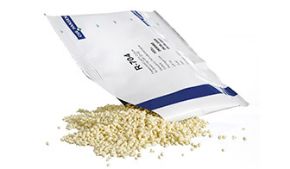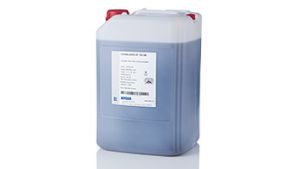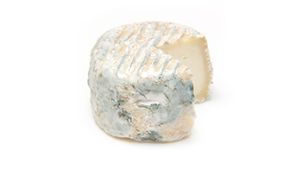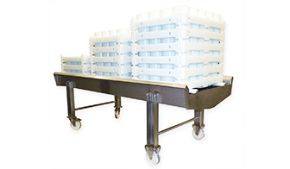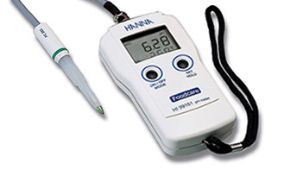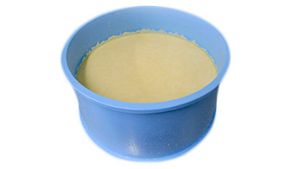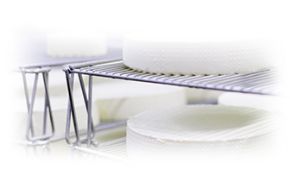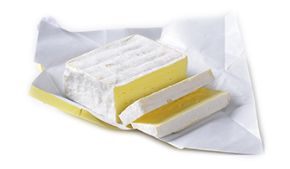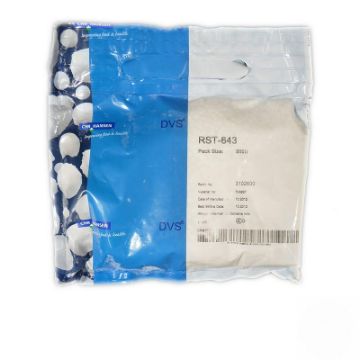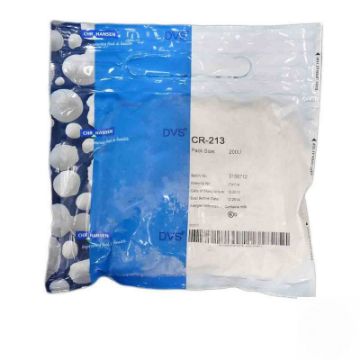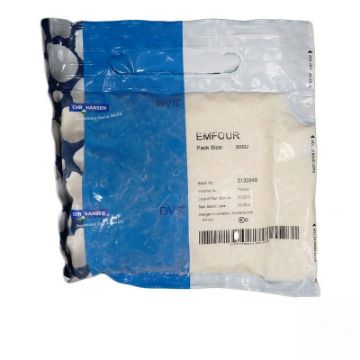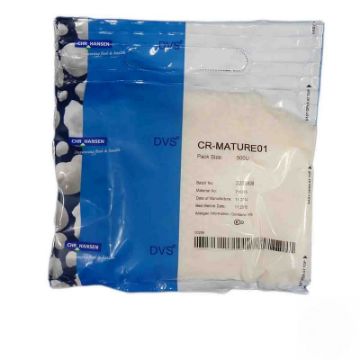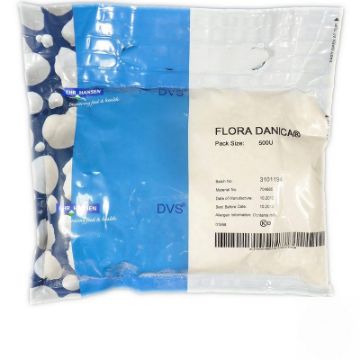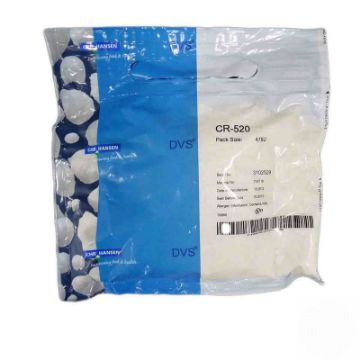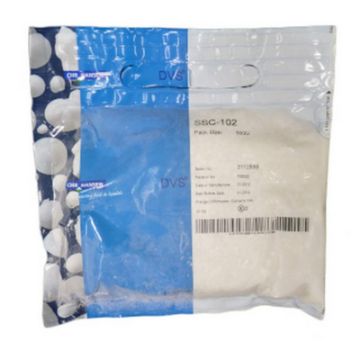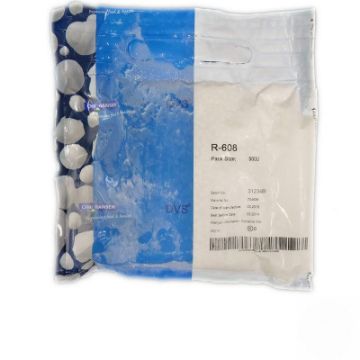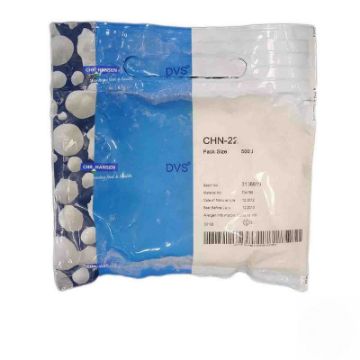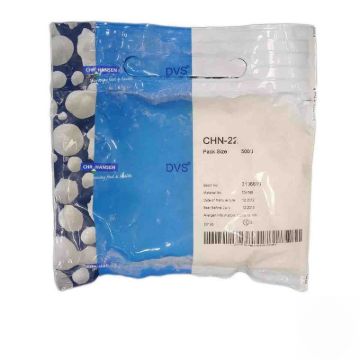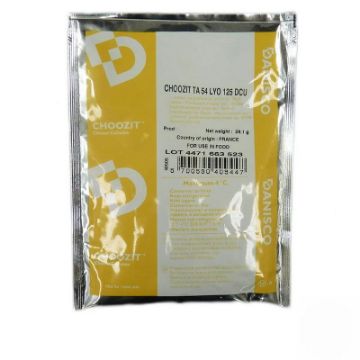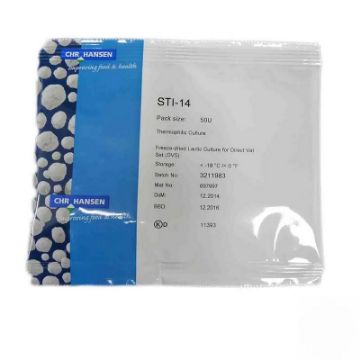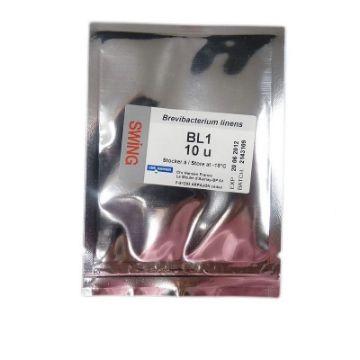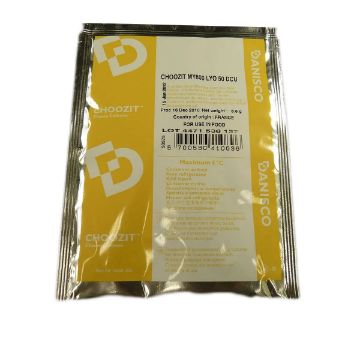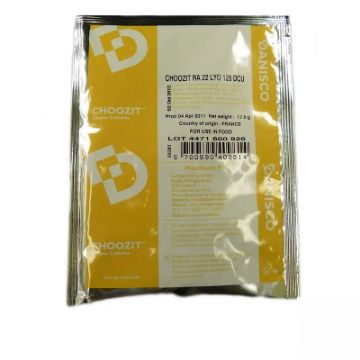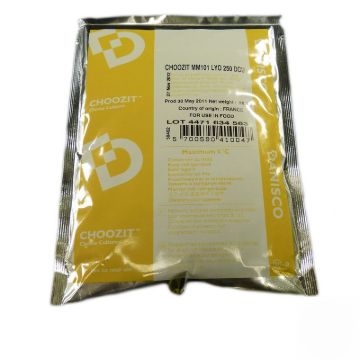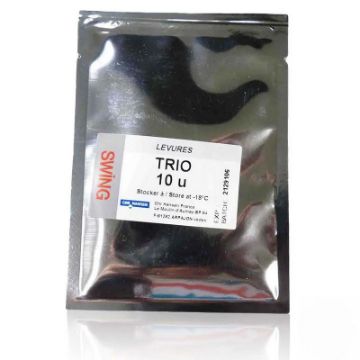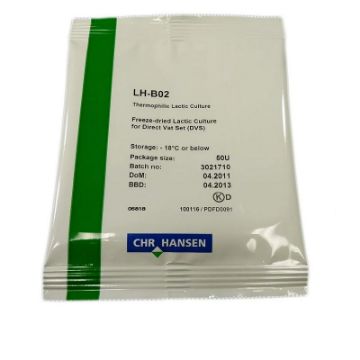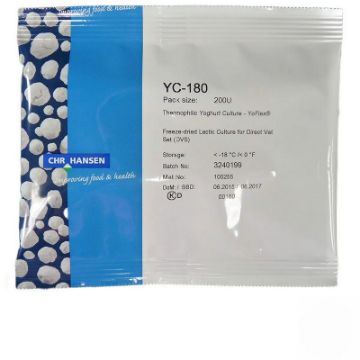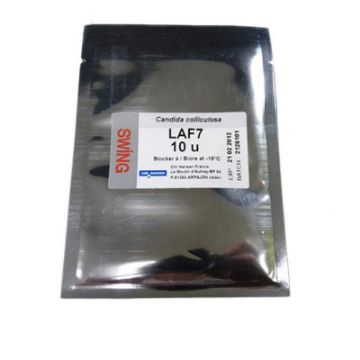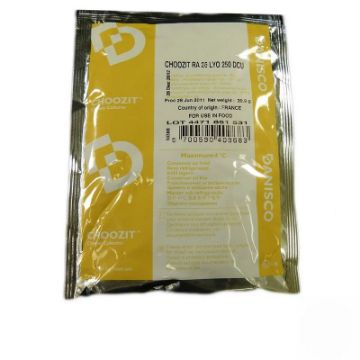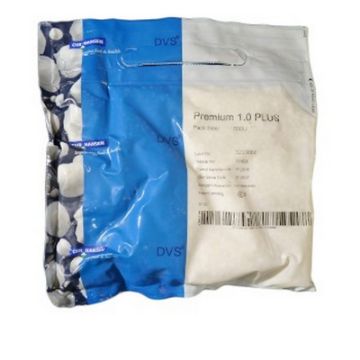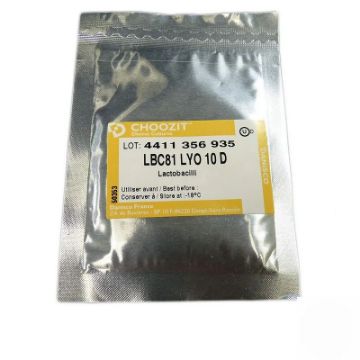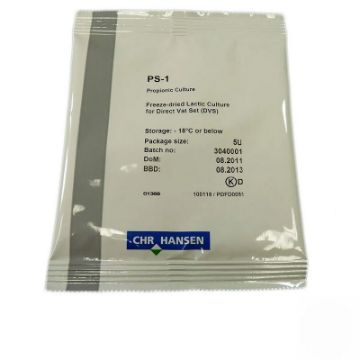Cultures
Choosing the right cultures for your application is the basis of your success. Here you will find the different ranges of cultures available.
RST-643 Frozen 500 u
This Chr.Hansen DVS® culture contains defined mesophilic and thermophilic strains and is for continous direct vat set use.
The culture provides fast lactic acid production and high phage robustness without any CO2 production (homofermentative).
The culture is primarily applied in the production of semi-hard, hard and very hard pressed cheeses with a closed texture and a min cooking temperature at 35°C (95°F).
Examples of applications are Cheddar, Cheshire, Colby, Monterey Jack, Munster, Fontal, Raclette & Saint Paulin.
CR-213 Frozen 200 u
A defined blend of mesophilic homofermentative adjunct culture.
The selection of the culture is based on a unique balanced aminopeptidase composition.
The strains are all isolated from traditionally well known cheese cultures on the criteria that they have no or reduced capability to ferment lactose.
The culture is primarily applied in the production of cheeses where normally mesophilic lactic acid bacteria are used.
This culture is particularly used in Cheddar, Continental cheeses (rindless cheese), low-fat cheese and cheese containing vegetable fat.
The culture enhances the overall flavor intensity of cheese by accentuating all important flavor notes.
It enhances balanced, mellow, rounded and clean flavors and suppresses unwanted flavors such as sour, bitter and flat.
EMFOUR Frozen 500 u
Thermophilic homofermentative culture blend.
In 1984 it was selected by Dutch cheesemakers as the most effective thermophilic culture for accelerating ripening in Dutch cheeses.
The culture significantly enhances mature and nutty flavor notes, and there is a tendency towards sweet, sour and salt tastes, too.
The body of the cheese is also enhanced by the use of EMFOUR.
The culture can reduce the ripening time by several weeks depending on the type of cheese, storage temperature and desired flavor.
CR-MATURE 01 Frozen 500 u
A defined adjunct culture blend which enhances the overall flavor intensity of the cheese by accentuating important flavor notes.
It enhances the balanced, mellow, rounded and clean flavors and suppresses unwanted flavors like sour, bitter and flat.
The culture contains a nisin producing strain for promotion of bacteria lysis.
Some strains are facultative heterofermentative and may produce CO2 in specific conditions.
FLORA-DANICA Frozen 500 u
Mesophilic aromatic culture, type LD.
The culture produces flavor and CO2.
The culture is primarily used in the manufacture of Continental cheese types (Gouda, Edam, Leerdam, Samsoe) and soft cheese types (Lactic cheeses, Camembert, Blue cheese).
RST-633 Frozen 500 u
This Chr.Hansen DVS® culture contains defined mesophilic and thermophilic strains and is for continous direct vat set use.
The culture provides fast lactic acid production and high phage robustness without any CO2 production (homofermentative).
The culture is primarily applied in the production of semi-hard, hard and very hard pressed cheeses with a closed texture and a min cooking temperature at 35°C (95°F).
Examples of applications are Cheddar, Cheshire, Colby, Monterey Jack, Munster, Fontal, Raclette & Saint Paulin.
CR-520 Frozen 475 u
A defined adjunct culture blend which enhances the overall flavor intensity of the cheese by accentuating important flavor notes.
It enhances the balanced, mellow, rounded and clean flavors and suppresses unwanted flavors like sour, bitter and flat.
The culture is primarily applied in the production of cheeses where normally mesophilic lactic acid bacteria are used.
This culture is particularly used in Cheddar, Continental cheeses (rindless cheese), low-fat cheese and cheese containing vegetable fat.
Soft Mild 1-02 Frozen 500 u
Thermophilic lactic acid cultures.
This Chr.Hansen culture system provides thermophilic defined strains for continuous Direct Vat Set (DVS®) use by rotation.
The cultures are selected for their moderate lactic acid production and low post-acidification.
The culture is primarily applied in the production of soft cheeses where low post acidification is required, e.g. stabilized soft cheeses (Brie, Crescenza, Argentinean Port Salut) and modern Camembert types.
SSC cultures can be used alone (stabilized cheeses) or in combination with Mesophilic aromatic cultures (LD types).
R-608 Frozen 500 u
This Chr.Hansen DVS® culture contains defined mesophilic strains and is for continous direct vat set use.
The culture provides fast lactic acid production and high phage robustness without any CO2 production (homofermentative).
The culture is primarily applied in the production of cheeses with a closed texture, e.g. Cheddar, Feta and Cottage cheese.
The culture can be applied in other fermented dairy products, in combination or not with other lactic cultures.
CHN-22 Frozen 500 u
Mesophilic aromatic culture, type LD.
The culture produces flavor and CO2.
The culture can be used in the manufacture of the following products
- soft cheese with slow acidification (Lactic cheese, Camenbert, Blue Cheese)
- cheese varieties with eyes (Gouda, Edam)
- fermented milk products manufactured by separation method (Sour Cream, Fromage Frais)
- lactic butter.
TA 54 Freeze-dried 125 DCU
Freeze-dried concentrated lactic starter for the direct vat inoculation of milk and milk bases.
STI-14 Freeze-dried 50 u
Thermophilic lactic acid culture.
The culture is primarily applied in Pasta Filata cheese types e.
g Mozzarella and Pizza cheese types.
The culture can be applied alone or in combination with other lactic acid cultures, e.g. Lactobacillus delbrueckii subsp.bulgaricus and Lactobacillus helveticus.
BL-1 Swing Freeze-dried 10 u
A selected single strain culture with origins in traditional cheese making.
Brevibacterium is one of the most important surface bacteria for its role in coloring the surface of the cheese, and producing flavor.
The culture may be applied in the production of smeared soft and semi-hard cheeses, mold soft cheese, or mixed rind cheeses.
ALP D Freeze-dried 100 DCU
Concentrated, freeze-dried culture for direct inoculation of process milk.
Defined multiple-species culture.
The quantities of inoculation indicated should be considered as guidelines.
Supplement cultures may be required depending on technology, fat content and product properties desired.
We do not accept any liability in case of undue application.
MY 800 Freeze-dried 50 DCU
Freeze-dried concentrated lactic starter for the direct vat inoculation of milk and milk bases.
RA 22 Freeze-dried 125 DCU
Freeze-dried concentrated lactic starter for the direct vat inoculation of milk and milk bases.
MM 101 Freeze-dried 250 DCU
A blend of defined strains of lactic bacteria for direct vat inoculation of milk, milk bases.
The culture is a freeze-dried powder.
LAF-TRIO Swing Freeze-dried 10 u
Selected yeast strains with origin in traditional French cheese making.
SWING® LAF TRIO is a blend of defined yeast strains.
They have been especially selected for their ablity to prevents the growth of contaminant at the surface of the cheese.
The synergetic effect from the strains inhibits contaminant, e.g. blue molds and mucor.
Yeast cultures may be used in lactic curd, soft cheeses with washed surface and Continental cheese with natural rind.
Yeast cultures may be used in lactic curd, soft cheeses with washed surface and Continental cheese with natural rind.
The culture works in different ways:
- by generation a protective film on the cheese surface
- by allowing the consumption of residual sugars
- by accelerating the curd neutralisation.
The culture works in different ways:
- by generation a protective film on the cheese surface
- by allowing the consumption of residual sugars
- by accelerating the curd neutralisation.
LH-B02 Freeze-dried 50 u
Defined thermophilic lactic acid culture.
The culture enhances the overall flavor intensity of the cheese by accentuating important flavor notes.
The culture is primary applied in the production of Italian and Swiss cheese varieties.
The culture can be applied alone or in combination with other lactic cultures, e.g. Streptococcus thermophilus and Lactobacillus delbrueckii subsp.bulgaricus and LD culture.
YC-180 Freeze-dried 200 u
Thermophilic YoFlex® culture.
The culture will produce yoghurt with medium flavor, high viscosity and medium postacidification.
Suitable for cup set, stirred and drinking yoghurt.
LAF 7 Swing Freeze-dried 10 u
Selected yeast single strain with origin in traditional French cheese making.
SWING® LAF cultures are an important tool in cheese making since they may be used to affect curd neutralization, texture and flavor.
Yeasts are common in traditional raw milk cheeses but arerarely found in industrially produced cheeses.
Therefore adding selected and controlled yeast cultures to the cheese may improve quality.
The yeast culture may be used to provide a balanced flavor and medium to high levels of CO2 formation in Kefir type products.
The culture will provide flavor and medium to high CO2 formation.
RA 26 Freeze-dried 250 DCU
Lyophilized lactic ferment concentrate for the direct inoculation of milk and milk bases
PREMIUM 1.0 PLUS Frozen 500 u
Thermophilic YoFlex® culture.
The culture will produce yoghurt with mild flavor, extra high viscosity and low post-acidification.
Suitable for stirred and set yoghurt.
The culture is ideal for manufacturing of Greek yogurt.
PS-1 Freeze-dried 5 u
Selected propionic acid bacteria culture.
The culture is primarily used for the production of Swiss-type cheeses, such as Emmental, Gruyère, Greve and similar types where the typical propionic acid aroma and eye formation are desired.
The culture is normally applied in combination with lactic cultures, such as Streptococcus thermophilus , Lactobacillus helveticus, Lactobacillus delbrueckii subsp.bulgaricus and LD cultures.
The culture ferments lactate resulting in the formation of propionic and acetic acids and large amounts of carbon dioxide.
Propionic acid cultures grow slowly in milk and have a low proteolytic activity.

